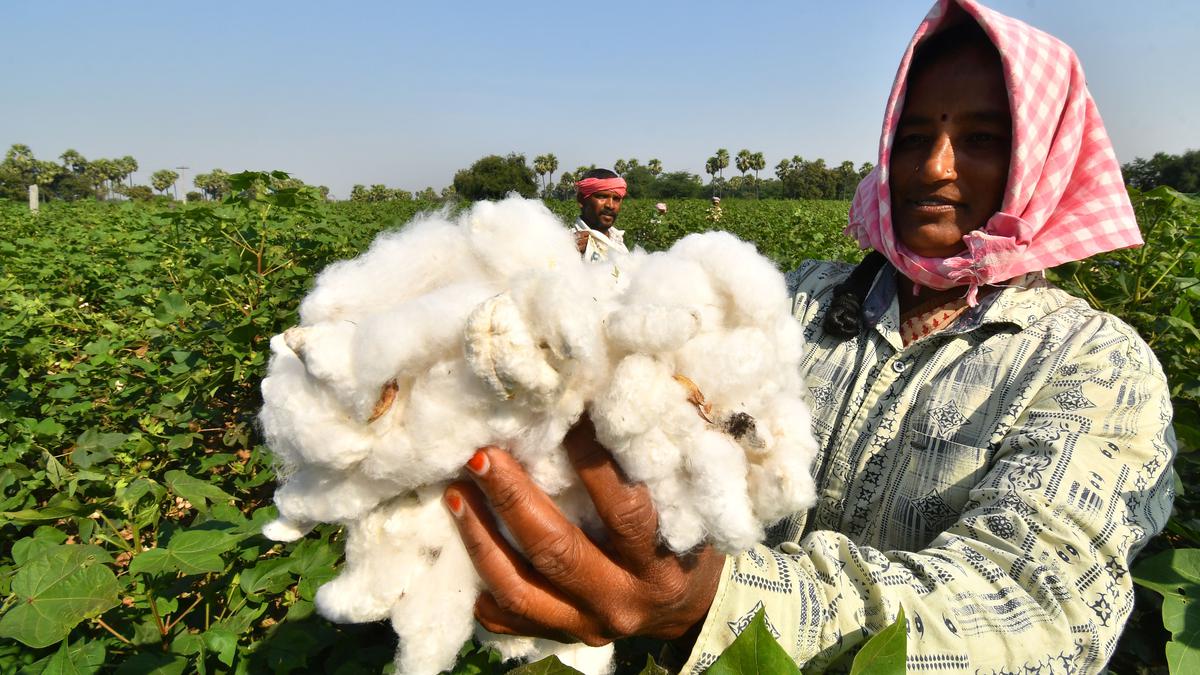Bengaluru, NFAPost: In a disheartening development for India’s agricultural landscape, the cotton industry is set to face a substantial setback in the upcoming season, with a projected 6% decline in production for 2023-2024. This concerning forecast is attributed to a dual threat of pink bollworm infestation and inadequate monsoon rains, posing significant challenges for cotton farmers across the nation.
The Committee on Cotton Production and Consumption recently released estimations, forecasting a decrease in cotton production from 336.60 lakh bales in the previous season to 316.57 lakh bales in the current one. Central and southern regions, encompassing key cotton-producing states such as Gujarat, Maharashtra, Telangana, Andhra Pradesh, Karnataka, and Tamil Nadu, are expected to bear the brunt of this decline.
Pink bollworm infestation, a perennial menace for cotton crops, coupled with erratic monsoons, has left farmers grappling with a double blow. Atul Ganatra, the president of the Cotton Association of India, has voiced concerns about the adverse impact of these challenges on the agricultural community, emphasizing the need for strategic interventions and support.
Nishant Asher, secretary of the Indian Cotton Federation (ICF), draws attention to a nuanced concern – while supply issues persist, the primary challenge this year lies in dwindling demand. Despite daily arrivals ranging from 70,000 to one lakh bales, the global textile and clothing industry is experiencing a slump, further exacerbating the woes of Indian cotton producers.
The international repercussions of this downturn are palpable, with the International Cotton Advisory Committee projecting a 3% increase in global cotton production for 2023-2024, resulting in a staggering 10% surge in global stocks. This oversupply on the global market threatens to depress international prices, potentially making Indian cotton relatively expensive and, consequently, impacting the domestic textile industry.
As of November 7, the market price for the Shankar-6 variety of cotton stood at ₹56,500 per candy, reflecting the volatility and challenges faced by the industry. Lalit Kumar Gupta, Chairman and Managing Director of the Cotton Corporation of India, seeks to allay fears by assuring that procurement centres are closely monitored. He emphasizes the commitment to ensuring that farmers receive the minimum support price, taking into account both domestic and international factors.
In conclusion, the Indian cotton industry is at a crossroads, grappling with a convergence of challenges that threaten the livelihoods of countless farmers. As the global cotton market braces for an oversupply crisis, it becomes imperative for stakeholders to collaboratively devise strategies that safeguard the interests of the farming community and the broader textile sector. The need for sustainable agricultural practices, pest management solutions, and proactive government support has never been more pressing in ensuring the resilience of India’s cotton industry in the face of these adversities.





